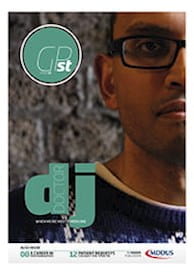INCREASING patient demand is a source of considerable pressure for GPs, many of whom face the challenges of managing shrinking budgets and growing workloads. Technology is often heralded as the key to greater efficiency and one solution adopted by many practices is telephone triage.
Estimates suggest that as many as 10-20 per cent of daytime contacts between patients and GP surgeries now take place by phone. But questions remain as to how efficient and effective these consultations are, as well as the associated risks.
First contact with GP out-of-hours services is usually by telephone, with a large proportion of encounters being managed entirely over the phone. This is significant as out-of-hours services (usually 6.30pm-8am) cover 70 per cent of the 168 hours in a week.
So do patients approve? Evidence is limited but the answer is probably a qualified ‘yes’, but only so far as they see a phone discussion as a convenient alternative to a face-to-face consultation and not, as is sometimes perceived, a barrier to accessing services.
In terms of the clinical and medico-legal risks of phone consultations, there is a lack of published studies and case reports addressing this specific area. MDDUS case files and those of the public service ombudsman can provide some insight, but as yet the data is not conclusive.
In our experience at MDDUS, three general themes emerge:
- Failure to see the patient when it would be appropriate and sensible to do so.
- Failure to communicate or pass on important information (e.g. a test result).
- Failure to safety net or provide sufficient advice in the event of deterioration.
There are ways to minimise such risks during telephone consultations. A recognised structure for clinical encounters by telephone is similar to that in face-to-face consultations. The doctor needs to:
- Establish the facts: the relevant history and clinical facts.
- Obtain the patient’s perspective about the issues at hand.
- Gather enough or the correct information to be in a position to make a diagnosis or formulate a plan.
- Reach a decision about what you think is going on and convey this to the patient.
- Come up with a management plan which can be fully understood by the patient.
- Put a safety net in place should things not go as well as expected.
- Document: recording the call, with appropriate data protection protocols, can be of great value and assistance ’when things go wrong’. Be sure to carefully note discussions with the patient in their record.
Of course, both proximity and visual cues are absent during telephone conversations, which means that the doctor needs to compensate. The subtle and more obvious face-to-face cues obtained through non-verbal communication are lost and any incongruity of affect present is more difficult to detect from words and tone of voice alone.
There’s an old sales training adage which teaches that it is easier to lie and make up excuses over the telephone. Therefore, the sales person should always endeavour to get in front of a potential customer rather than take the lazy option of calling them up. Could the same dynamics exist in the doctor-patient telephone encounter? What you can’t see in a telephone consultation are the obvious and sometimes subtle facial expressions, gestures and postures that often provide evidence as to an individual’s true thoughts and state of mind.
So, what’s to be done?
- When on the phone it can help to talk more slowly and clearly (the so-called ‘telephone voice’).
- Ask more questions than you might otherwise in a face-to-face consultation to ascertain and be certain of your facts, and to ensure the patient clearly understands what is being said.
- Ask the patient to repeat back to you what has been discussed and agreed: you might also consider asking the patient to write down the details of any agreed management plan and what to do if things don’t go as expected.
- Adopt a lower decision-making threshold about reverting to a face-to-face consultation: any visible lesion (lumps, bumps, rashes etc) should be examined face-to-face. Be mindful of the potential outcome in any delay getting a patient in front of you. For example, a two-hour gap before examining a patient could be long enough for serious deterioration in certain cases.
Some other practical risk reduction measures to consider include:
- Dedicated and protected telephone consultation times (i.e. no interruptions).
- Enhanced documentation to compensate for the absence of physical examination.
- Standardised protocols for managing the more common conditions, similar to those used by NHS 111 and NHS 24.
- Appropriate training for all staff involved in the telephone consultation process.
Taking all of this into account raises some interesting questions and challenges about why telephone consultations are offered in the first place. I suspect it is often to do with a perception that greater use of the telephone increases efficiency and throughput from the clinician’s or service perspective.
However, if a more risk averse approach were adopted through increased scrutiny and enhanced safety netting, then by default a telephone consultation could quite easily take up more time and resources than seeing the patient face-to-face in the first place.
Alan Frame is a risk adviser at MDDUS
This page was correct at the time of publication. Any guidance is intended as general guidance for members only. If you are a member and need specific advice relating to your own circumstances, please contact one of our advisers.
Read more from this issue of Insight Primary

Save this article
Save this article to a list of favourite articles which members can access in their account.
Save to library


